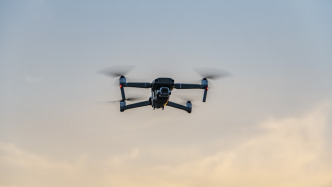
Chinese bronzes from the 5th century BC Credit: B Christopher Alamy
A missing ingredient in ancient Chinese bronze recipes may have been discovered, a new study sheds light on the level of sophistication in chemical practice at the time. The related results were published in the "Antiquities" published on August 10.Kao Gong Ji is the oldest technical encyclopedia in the world, with a history of 2,300 years. The book includes instructions on how to craft items such as metal drums, chariots and weapons, as well as 6 bronze recipes that have long puzzled researchers.
While bronze-making at the time was not unique to China, Liu Ruiliang, of the British Museum in London, said the style and scale of bronzes produced in China were unparalleled.
"We couldn't help asking ourselves, how did the Chinese produce so many bronzes at that time?" Liu Ruiliang said.
Bronze is usually a mixture of copper and tin. At the heart of the secret recipe are "gold" and "tin" two ingredients that researchers have been unable to identify. In modern Chinese, "jin" means gold, but in ancient times it meant copper or copper alloys. Meanwhile, "tin" has always been considered to refer to tin.
But chemical analysis of bronzes from that period showed that "gold" and "tin" could not have simply been composed of copper and tin.
Ruiliang Liu and colleagues analyzed previously collected data on the chemical composition of Chinese knife-shaped coins that were produced during the same period when the recipe was recorded. By teasing out the metal relationships present in the coins, the researchers believe that the items were made from prefabricated alloys.
They found that the higher the lead concentration in the coins, the lower the copper and tin concentrations. The coins with the highest concentrations of copper also have the highest concentrations of tin. These findings suggest that lead was mixed into an alloy of copper and tin -- a bronze alloy.
By simulating different combinations, the team determined that an 80:15:5 copper-tin-lead alloy mixed with a 50:50 copper-lead alloy in different ratios best matched the coin's chemical data.
Liu Ruiliang said that according to the records of Kao Gong Ji, these prefabricated alloys may be "gold" and "tin" respectively. But he added that the recipes in the book may not reflect how bronze is usually made.
"If anything, it's that the recipes are too specific," he said. "Those with really dirty hands may not be able to read or write, so they can't record the recipes. I think the people who write the recipes and the real labor There is a knowledge gap between people.”
Jianjun Mei of Cambridge University is not entirely convinced by the findings. The recipes should not be considered an accurate record of what was done at the time, he said. "These officials (who wrote the text) may only focus on the most important materials, like copper and tin, and not on other materials." If you think of "gold" and "tin" as copper and tin, the formulations are very useful, he said. Still valid for the most part.
In ancient China, bronze was used to make large vessels for religious purposes, says Jessica Rawson of Oxford University. "China has a huge workforce and is therefore able to make very complex products that use more metals than the West," she said.
Related paper information: https://doi.org/10.15184/aqy.2022.81).
(Original title: Deciphering the Ancient Chinese Mysterious Bronze Formula)




Comments